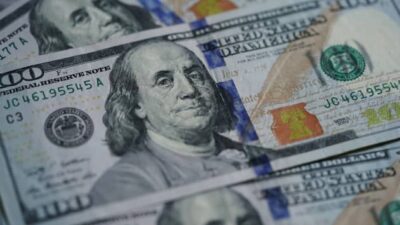Rama Krishna Sangem
Can any country or countries in the world remove the dominance of US dollar? Unlikely say the global financial experts. US dollar may weaken or down for some time but will never be out or can be replaced by any other currency. So, there is no basis for President Trump’s fears of BRICS group trying to weaken his dollar. Dollar is safe at least in near future!
Since the 1940s, the US dollar has held firm as the global reserve currency, driving international trade and reinforcing the status of the United States as an economic superpower. In recent years, however, some countries have expressed opposition to the US dollar’s longstanding economic dominance.
The BRICS economic bloc, named for its founding members, Brazil, Russia, India, China, and South Africa, has actively sought to reduce its reliance on the US dollar. China has even pushed for “de-dollarisation”, by promoting its currency, the yuan, and forming currency swap agreements with other countries.
Christine Lagarde, president of the European Central Bank, recently noted that a “shift” was under way that would allow for the “euro to gain global prominence”. Lagarde said in June that the euro accounts for approximately 20 percent of global foreign exchange reserves, and that the “dominant role of the US dollar”, which accounts for 58 percent, “is no longer certain”.
“History teaches us that regimes seem enduring – until they no longer are. Shifts in global currency dominance have happened before. This moment of change is an opportunity for Europe. It is a ‘global euro’ moment,” Lagarde said.
The dollar has also weakened this year, experiencing its sharpest six-month decline in decades. Global investors have been reacting to policy uncertainty under the administration of US President Donald Trump, rising debt, and shifting interest rate expectations – with some questioning its “safe-haven” appeal.
Experts say that in the unlikely event that the US were to lose its reserve currency status, the impact would be profound, as the country would lose much of its leverage to influence global trade and enforce sanctions – international trade that does not directly involve the US often runs through the dollar.
“Or,” as Trump told reporters earlier this month, “If we lost the world standard dollar, that would be like losing a war. As the global reserve currency, the US dollar underpins a monetary system where central banks rely on it to stabilise their economies, manage debt and implement trade policies.
Dollar is a safe investment for the world
Historically seen as a safe investment for the world, the dollar remains so deeply embedded in the global system that, despite recent shake-ups, it is unlikely to be dethroned anytime soon, emboldened by a longstanding history of resilience.
The US dollar was put on this course in the 1930s, when then-President Franklin D Roosevelt centralised US gold reserves and tied the dollar to a fixed supply of gold. Then, in 1944, the US spearheaded the Bretton Woods Agreement, which pegged international currencies to the dollar, leading to the creation of the International Monetary Fund (IMF) and the World Bank. So, there is no threat to US dollar anytime soon.


